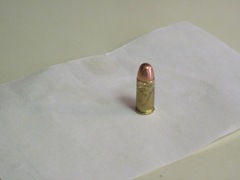I'm using my prior break-out of the factions within the Republican Party from back in 2008 to look at where things stand today with the candidates in the field. I will be doing some re-posting of material from that and not going into the over-view of them within the current atmosphere of the pre-election cycle.
As they have broken out these three groups stand out, and they do have sub-groups within them but gain factional affiliation by their positions as sub-groups.
I) First is the SecCons or Security Conservatives. The strong position of the US to wage war in her defense was a vital concern during the Cold War and this faction was in ascendance then. By putting military concerns first they were able to back a strong and final build-up against the USSR that covered decades and put the Soviet system which was always on the ropes down and out for the count. These were the backers that won the equivalent of a World War without bringing on true nuclear conflict. Their problems are in the realms of Fiscal, Social and Domestic policy outside of the military realm and with the draw-down from Iraq, the ongoing relatively low-level conflict against the Talibe in AFPAK and helping out a few other Nations in COIN (Philippines, Colombia, Kenya, Yemen) they are losing a strong position within the Republican Party. While some of the candidates will support a continued level of military affairs, this faction has no backer who is first and foremost for the military. Without the Soviets and with China now having its economy implode in bad debt, the lower threat of terrorism going nuclear is not one that pushes people to actively support the old style military structure. The military, for its part, understands this and is adapting to the modern world, but it is a world with a lower need for capital intensive defense systems and without a large economic need the SecCons are being marginalized.
Part of the marginalization is the comfort to social moderates and liberals, plus a willingness to spend heaven and earth for the latest equipment. Our times are no longer ones that allow for such extravagance and socially the pendulum that started swinging in the 1890's with Progressivism has, apparently, reached as far as it can go on the other end of the cycle.
II) Second are the FiCons or Fiscal Conservatives. This part of the Republican Party has been part and parcel of the 'Rockefeller Republican' brand for decades. It is this section of the party that is now breaking up due to the Tea Party movement that hadn't even been thought of in 2008. Today there are two branches within the FiCons and they are currently the ones on the internal battle-lines for the party, itself. Thus I will go into a bit of detail here.
1) Rockefeller Republicans - These are the 'Establishment Republicans', the guys with the money and many of the reigns via the control of the party leadership and their influence has withstood the Reagan Revolution with its SoCon underpinnings. These are generally seen as the Big Business supporters for earmarks, subsidies, tax breaks and so on via budgetary work in DC. It is this segment that overwhelming benefits from the K Street lobbyists who use their outside money and revolving door connections to get inside influence on the federal budget. This is mirrored in the Democratic Party, to be sure, but in the Republican Party when anyone spoke of 'fiscal conservative' between 1950 and 1980, it was this cohort that was being referenced. Do note that they are FOR tax breaks but not FOR cutting the size of government, therefore any short-term gain in political advantage from tax breaks is off-set by further erosion of personal liberty of the individual due to larger and more officious government. While it was this faction that called out the problem of SSA and M&Ms, they are also the ones most notable for being unable or unwilling to get these programs reduced or on a road to being abolished as fiscally unsound. At least two of the current candidates come from this faction (Mitt Romney and Newt Gingrich) or are affiliated with it via their business and political outlooks, and while they are (apparently) at odds with each other on the campaign trail, they are both unwilling to do any wholesale revision of the US government. Abolishing programs still leaves the apparatus to regenerate them in place, thus removing 'welfare' has allowed for other programs to flourish where there was once that single program and done at higher cost and less accountability. No one who believes that individual liberty is the basis for society, the Nation, government and the State would ever espouse 'mandates' for anything upon individuals in the name of fiscal conservatism.
2) Tea Party FiCons - The largest faction of the Tea Party is in this sub-group within the FiCons. Unlike the older cohort, this cohort sees small business and smaller government as the course to go for fiscal conservatism. The argument that government is doing things it was never designed nor meant to do and not doing those things well or efficiently for the citizenry and, in fact, is infringing on individual fiscal concerns is one that is a 'Fusion' concept, of which I will talk more about later. Unlike the RR-FiCons, the TP-FiCons are building a fundamental ECONOMIC case for the power of personal liberty to guide the economy that is not a RR-FiCon one. Where the RR-FiCons are inherently Hamiltonian or Progressive in their outlook, the TP-FiCons are inherently Jacksonian and Traditionalist in their positions. The inherent nature of an economy being made up of individual transactions at the lowest level seeking the most efficient means to enable such transactions and then allowing for a larger emergent phenomena to take root based on those transactions is one that is immediately identifiable to TP-FiCons: it is not just Hayek but the nature of human liberty and its source that argues for this and argues against the intermediation of government in any meaningful positive (that is to say in the realm of positive liberty) way and only that it needs to exercise its negative powers granted by the people to safeguard the economy from aberrant actors who will not play by the set of rules for economic exchanges. Government cannot make such low level decisions without huge negative impact on the overall economy and, no matter what other 'good' is generated, the lost value of human liberty to fully flourish is something that impoverishes rich and poor alike and makes it harder for the poor to advance. This sub-group is aiming to remove the Establishment RR-FiCon death grip on the party via campaign donations: members directly donate to individuals running for office, not to the party. This has only been going on, in a real sense, for less than 2 years and due to the economic times we are in and the failure of government to adapt to them (indeed it continues being the problem to the Nation, economically) the more the TP-FiCons will shift the RR-FiCons out of control of the party funds and the party system.
III) Social Conservatives - In the prior work I broke this category up into the Christian Conservatives and the Traditionalist Conservatives, each with their own outlook on society and the role of government and the church in people's lives. While not at logger-heads, they have not always marched to the same tune and it was only for a few short years under Ronald Reagan that both sub-groups had time together in-step and in-formation. Today these two sub-groups are now getting a new blend via a third group made up of parts of each of them and the TP-FiCons: the Fusionists.
1) Christian Conservatives - Here the prior break-out of religious observation and moral law guidance that was the bastion of the Christian Conservatives is now finding that it can make an economic case, as well, which is uncharted waters for many Christian Conservatives. Moral Law guidance is, itself, only secondarily economic and primarily about the duty of man to god and society to make both moral so as to get good government. Thus, until the last 2-3 years, the idea that government could be used to promote a moral 'good' was an idea taken up by some candidates (Mike Huckabee in 2008, Newt Gingrich in this go around). Yet this is fundamentally against moral teachings as government is the last, least and worst place to receive any moral teachings. Anything that gets between you and God should be disdained, and yet the Progressive Era had slowly shifted Christian Conservative SoCons into this idea that government is the last refuge for the poor and needy to go... not to the actual people who make up the Nation as caring for the poor and needy is a directive to individuals, not to States nor Nations. The idea that government can tell you when you can work, how long you can work, if you are worthy of 'retirement' benefits, and on and on have been a slow and steady erosion of the moral fiber of the Nation by assaulting the moral fiber of individuals inside and, increasingly, outside the realm of religiously observant Americans. The moral line in the sand against abortion was the first sign that this erosion had gone too far, but that Christian Conservatives could only do this small portion of the work of protecting society and could not grasp the larger threat to the entire society on a moral basis that government was pushing. The awakening of Christian Conservatives to the much, much deeper teaching of our rights being vested in us took over three decades to finally filter into this sub-group of SoCons, and the re-identification of not just Life but Liberty and the Pursuit of Happiness being prime movers granted by God is now spreading amongst the Christian Conservative SoCons who used to just stick to their faction knitting but now find a way to express a much deeper moral and religious belief for society via economics. Being conservative it is a slow to move group, but once in motion little will stop it, and if the line in the sand is but a starting line for repeal of the Progressive Era, then it will be the individual who couple God, Faith, Life, Liberty and the Pursuit of Happiness as a continuous whole that will be the major part of the Fusionist sub-group.
2) Traditional Conservatives - These are the followers of Federalism, a society that treats its fellow citizens with respect, the builders of hearth and home (not just those who purchase one) and while religious to a large extent, it is the religion of conviction at home by the fireside with one's children and the role of man to build a good society for not just himself but for his fellow man, as well, as a great good and duty of man. While this is the quietest faction of the SoCons they have been a part of the party since Lincoln, and have always understood respecting government but questioning its extent and growth. For Traditionalists there is always an economic point to be made and it is centered on the family check book and how one spends money for oneself. These are the individuals who uphold thrift, of neither a borrow nor lender be, paying back one's debts not just promptly but ending them as soon as possible, and for supporting the notion that a man cannot be free if he is in debt to any other man or institution via his finances. This sub-group may be the first to fully Fuse with the TP FiCons as there are direct parallels (indeed very deep parallels) between household accounting and government accounting, and that if you owe someone then you are in their power due to your debt. The case that man who is in debt is living on borrowed time and that his works are prone to failure and collapse (no matter if they last) is one that is understood deeply within the Traditionalist Community. It is this community that is closest to the old Democratic Jacsksonian community (that left the Democrats in the late 1960's) and the amount of cross-over between the old trail blazers (Jacksonians) and the old first settlers (Traditionalists) have always made them able to get along on a social level.
IV) Fusionist Conservatives - Fiscal Conservatism has deep roots in not only societal good but the teachings from the Judeo-Christian heritage about duty to God and one's fellow man. Unlike libertarians the Fusionists recognize that not all of man's liberties and rights are positive, as Nature gives us both equally (although not in equal amounts), so that the necessity of society to generate organs to watch over and stop the exercise of negative liberties and rights within society requires government. Man is not wholly good nor evil, but has positive and negative rights and liberties which we can bias via moral teachings to curb the negative rights and liberties and enshrine the positive ones worthy of protection. Government is to recognize that these positive liberties and rights are to be protected, not infringed upon, and the case for this comes not from legal proceedings but from moral teachings, upholding society, and holding government accountable for the negative powers we grant it to safeguard society and the individual. This is a deeply libertarian approach, yes, but it is not made by modern libertarian channels but through ones of religious observance, religious teachings and understanding man's duty to God and his fellow man. Fusionist Conservatism is, at once, deeply conservative and extremely expansive in this day and age as it is the naturally recognized antidote to tyrannical or despotic government. When Barack Obama chided the people of Pennsylvania as grasping on to their guns, god and bible, he was mocking the very basis of what is the enemy of Progressivism and Socialism in all its forms. These three, together, give the basis for personal liberty (guns), the originator of our liberty (God) and the written moral teachings of God (the Holy Bible) all in one swoop. Throw in Gold and you have the result of protected personal liberty able to prosper with obedience to God and upholding moral teachings. Gold is a result of these things, not a cause of them, and it is garnered through liberty ONLY. Unwittingly Barack Obama named the Fusionist Awakening in these concepts and knows not the history of a debauched, debased and decadent society that adheres as leeches to government is dissolved by a devout people willing to undergo martyrdom for eternal salvation. One laughs at these things at their peril, and in speaking of them the seeds that were already planted over decades were given final fertilizer and water to grow again.
At the rate of change for the Republican Party and Conservatism as a whole, the next decade is one that will be fraught with danger and great promise.
Government will need to climb down from its Himalayan Mountain Range of debt. It can be tossed off, with great social turmoil, or it can climb down by jettisoning the infringement of positive liberties and rights in the way of retirement, medical aid and the million and one other things done in the name of 'good' from environment to energy to agriculture to 'the humanities' to education, either via slow phase-out or wholesale cut-off. Government so large, so officious and, at the same time, so incompetent creates a Law of Rules in which any person is probably in violation of some rule or regulation at any given moment in the day. The Rule of Law is simple and easy to understand laws that are clearly defined and enforced without favor nor fervor, while the Law of Rules is all about favoritism and payoffs. To do this requires and understanding of our fellow citizens that we, as man, have been living over the margin and near the edge of the abyss waiting for one ill moment to topple us into despotism or worse. To get back from that edge the argument that our personal liberties, rights and freedom are our own salvation in this life and the next, and that passing them off to others (which is so very easy) means that we, as individuals, become cold and cruel to our fellow man because we refuse to recognize his circumstances and help him out of them. Government cannot do that, indeed it MUST NOT do that as that is not its place as a part of society. It is just an organ of society, and one that processes the identified problems and waste material and gets rid of them... which is not the brain, in case this has been missed. No better argument for chasing appetites to constipation of debt can be rendered than is shown by our current government which has been eating so much in the way of the positive it can no longer accomplish its duties to us, as citizens, via its negative powers and responsibilities.
This is a hard argument to make as the Deadly Sin of Sloth is one that guides this age as no other. Yet the problems of our fellow man are not for someone else to attend to, but for us, as individuals, to ameliorate. One cannot sit back and let others take care of things, because becoming glued to one's sofa soon means that you can no longer remember how to move from it and become the very sort of problem you were unwilling to deal with in the first place. The heart of charity is not taxation, which is the negative liberty of theft who's power we lend for government in a limited area of commerce, but in the heart of man who is willing to give time, effort, though, a helping hand and last and least is cash to his fellow man to create a better society. To get a more cohesive society (albeit with stark and fun differences for that is the essence of liberty on the positive side) we cannot entrust government as a caretaker or the builder of a safety net as it is not only prone to corruption but inefficient and will seek to grant favor to the few via funds that are not available, so as to expand power over the many. Government granted positive outlook is tyrannical at its core because it can couple the whip with the reward and break man to it. To stop that require accountability on the fiscal side, first, so as to get rid of the unnecessary appendages of government that threaten liberty in the first place. When there is no safety net, no tax breaks, no subsidies, we are then left to our own devices to find a good way to live without the costly help of tyranny.
The current field of candidates reflects those trying to grasp on to the old, and dying, those trying to muddle through and a few trying to chart a path to a better future with smaller government and enhanced liberty for man.
Four years will not alter the fundamentals changing America. We may crash off the mountains into debt, but that is not oblivion as we then get to the end state in a few days, and with next to no government, to boot.
The trends cannot be changed.
What can be altered is the outlook of individual to embrace what is coming and help soften it and explain it, so that we can get to a better place as a society and a nation.
If you dare to, that is.








 Supporting Friends and Allies
Supporting Friends and Allies





